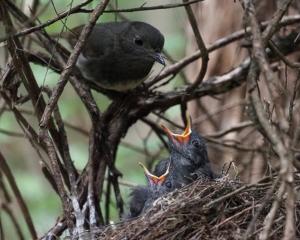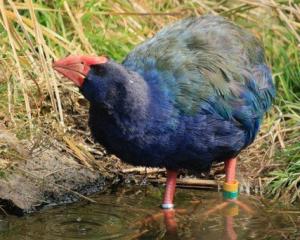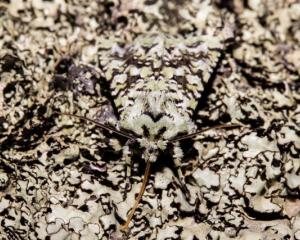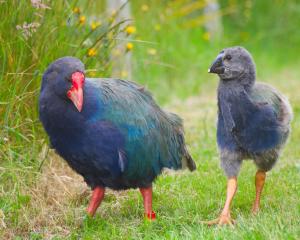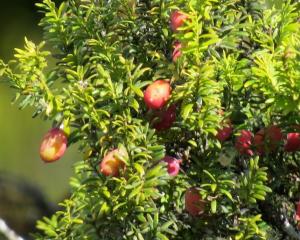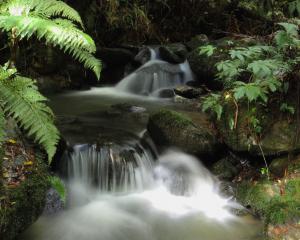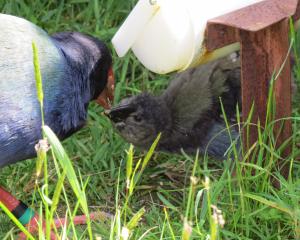For a threatened species, the robin is a remarkably confiding bird, seemingly unafraid of humans and liable to approach you on a walking track if they think you have scuffed up insects or other invertebrate food for them.
That level of tameness is, of course, the reason they are so vulnerable to predators. A small and isolated population of South Island robins, numbering just a couple of hundred, have managed to survive on the outskirts of metropolitan Dunedin.
Patches of Silverpeaks planted forest and the native forest of the Silverstream catchment are where they are mainly found. The nearest other robins to Dunedin are more than 100km away in the mountains of Northern Southland. There are only scattered populations elsewhere in South Island forests.
Predators - rats, weasels, stoats, possums and feral cats included - keep numbers low.
In April 2010, 25 robins from Douglas fir plantations on the flanks of the Silverpeaks and from Flagstaff were liberated at Orokonui, just 7km away. Quite a few promptly flew back to where they had come from following forest corridors. A second translocation of 20 individuals, all of them recent fledglings, was tried a year later to augment the two pairs and their four surviving offspring. This time the robins stayed and multiplied.
Dunedin robins usually start to nest in early September. In the past season, the first eggs were laid about August 12. That early start boded well for a really good summer - the second breeding season since the second reintroduction of robins.
The first round of clutches did not fare too well when a cold snap caused the failure of at least four nests. But the drawback early on was quickly overcome by high productivity and a fast turnover of clutches. By the end of the season - the last chick fledged on January 17 - there were 15 confirmed breeding pairs, which had produced 67 fledglings in 33 successful clutches. Nesting success is running at 83%, which is much better than their success in the Silverstream area.
At Orokonui this past summer, only two pairs did not produce any offspring. A further three pairs were found only at the very end of the breeding season and it is likely that we missed their earlier clutches.
All known young birds were banded either as chicks in the nest or as fledglings. We used a box-trap at times, a very time-consuming task requiring a lot of patience. Keeping track of nesting progress also kept the monitoring team busy.
But even a bumper breeding season does not pass without drama: A female was found dead in front of her nest, where there were two begging chicks. The widowed male had to raise all the offspring on his own. We made sure he was given a generous allocation of mealworms every time we walked past his territory. Both nestlings survived.
In comparison, the robin pairs we monitor in the Silverstream area produced only one successful clutch. But there are hopeful signs the self-setting rodent and stoat traps that Forest and Bird has deployed are doing their job and reducing predators locally.
At Orokonui, robin research projects undertaken by University of Otago zoologists are focusing on the birds' dispersal after translocation, homing instinct, survivorship, breeding success and genetics. Having been isolated for a long time, the Dunedin birds are known to be facing a genetic bottleneck. Given a haven to breed in, robins can produce up to four clutches a year of two to four eggs per clutch. They are strongly territorial and usually maintain pair bonds.
Until now, visitors have needed to walk well into the ecosanctuary to see robins, but as the birds set new territories, they will eventually become common in the upper part of the ecosanctuary where the most popular walking tracks are.
- Robert Schadewinkel is a University of Otago zoology master's student researching the dispersal and establishment of South Island robins after translocation to Orokonui Ecosanctuary.
• Wild Ways appears in the Magazine section on the first Saturday of each month.



